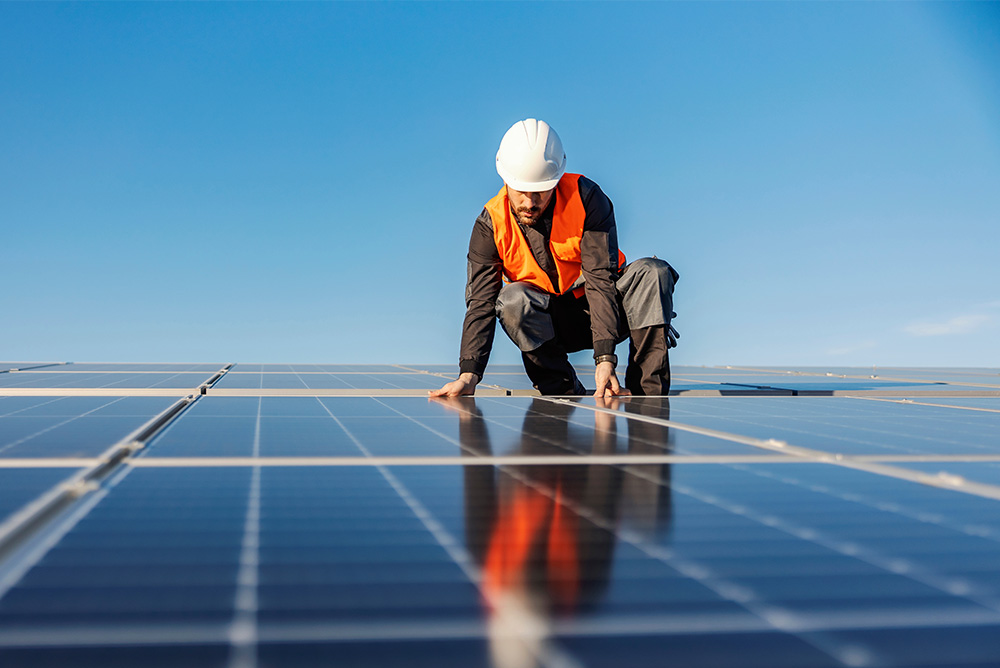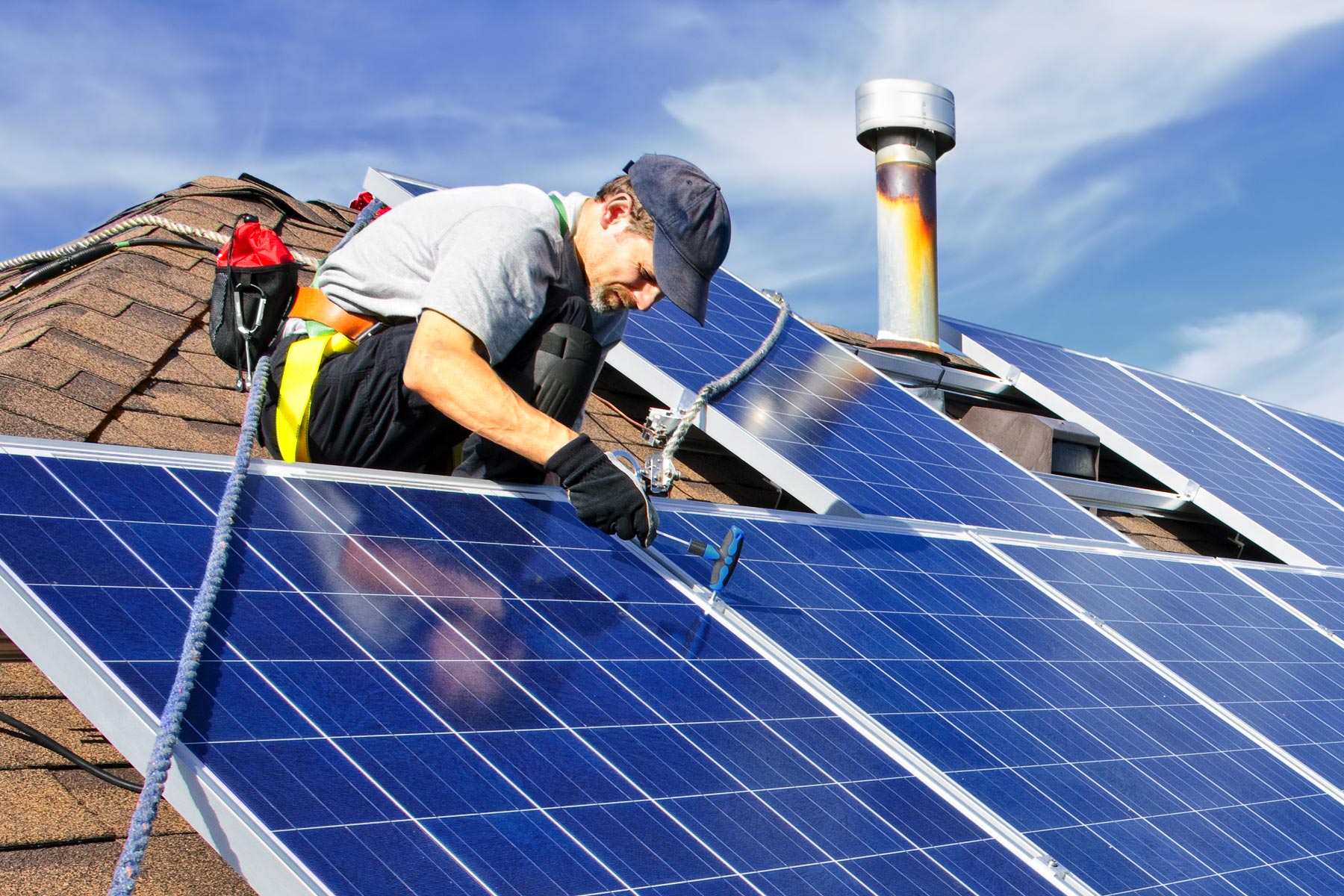Discovering the Different Sorts Of Solar Panels and Their Distinct Benefits
The landscape of solar panels offers different choices, each with distinctive benefits matched to different applications. Monocrystalline panels stand apart for their effectiveness and looks, while polycrystalline models appeal to budget-conscious consumers. Thin-film innovation provides flexibility in setup. Ingenious styles like bifacial and building-integrated photovoltaics additionally boost the allure of solar power. Comprehending these distinctions is essential for making informed decisions. The concern continues to be: which kind will best fulfill details power requirements?
Monocrystalline Solar Panels
Although various types of solar panels are readily available, monocrystalline solar panels are typically pertained to as the most effective alternative. These panels are made from a single crystal framework, usually silicon, which enables them to transform sunlight right into power a lot more properly than various other kinds. The effectiveness rates for monocrystalline panels can vary from 15% to over 22%, making them a popular selection for industrial and property installations where space is restricted.
)
Polycrystalline Solar Panels
Polycrystalline solar panels are produced utilizing a distinctive manufacturing process that involves melting multiple silicon crystals together. This method can bring about advantages such as reduced production costs, making them a prominent selection for lots of customers. Nonetheless, their effectiveness and performance factors may vary compared to other types of solar panels, requiring careful factor to consider.
Production Process Advantages
The manufacturing process of polycrystalline solar panels uses a number of advantages that contribute to their appeal in the renewable resource market. The production makes use of silicon scrap, which reduces waste and decreases material expenses, making it economically practical. Unlike monocrystalline panels, the production of polycrystalline panels includes less complex and much less energy-intensive techniques, causing a smaller carbon footprint. Furthermore, the casting process enables the production of several cells concurrently, improving performance in production. This approach likewise causes a more uniform framework, which can boost the general efficiency and long life of the panels. Polycrystalline solar panels offer an economical option for consumers while promoting sustainable production practices within the industry.
Efficiency and Performance Factors
Exactly how do performance and performance variables affect the performance of polycrystalline photovoltaic panels? These panels typically show lower effectiveness rates, balancing around 15-20%, compared to their monocrystalline equivalents. Variables such as temperature level level of sensitivity, shading, and the angle of installation considerably influence their efficiency. Polycrystalline panels tend to perform much better in cooler environments yet may struggle in heats, leading to minimized outcome. Additionally, their efficiency can be affected by dirt and debris build-up, necessitating routine upkeep. Regardless of these challenges, polycrystalline panels are much more inexpensive and use a strong equilibrium in between cost and performance. Recognizing these effectiveness and efficiency aspects is important for customers looking for to make best use of solar power manufacturing and overall system effectiveness.
Thin-Film Solar Panels
Thin-film solar panels stand for a functional and lightweight choice in the solar power landscape. These panels are built by depositing one or more slim layers of photovoltaic product onto a substratum, which can consist of metal, glass, or plastic. This manufacturing procedure permits greater flexibility in design and applications compared to typical crystalline solar panels.
Thin-film modern technology typically includes lower performance prices, yet it makes up for this with minimized production prices and enhanced performance in low-light problems. Their lightweight nature makes them suitable for installation on varied surfaces, consisting of bent structures and lorries. Additionally, these panels can be incorporated right into building products, using aesthetic advantages alongside energy generation.
Bifacial Solar Panels
Bifacial solar panels are obtaining focus for their improved performance and efficiency, as they can capture sunlight from both sides. This dual-sided design enables for increased energy manufacturing, especially in reflective atmospheres. In addition, their installation offers prospective cost advantages, making them an eye-catching choice for numerous applications.
Performance and Performance
The efficiency and performance of solar panels are vital factors in establishing their effectiveness in energy generation, with bifacial solar panels attracting attention for their innovative layout. These panels feature solar batteries on both sides, allowing them to catch sunshine from multiple angles. This dual-sided ability boosts energy output, especially in environments with reflective surface areas, such as snow or sand. Bifacial solar panels can increase power production by 10-20% contrasted to typical monofacial panels. Their ability to harness indirect sunlight adds to their general performance, making them a compelling choice for various applications. Improvements in technology proceed to boost their performance metrics, strengthening their place in the sustainable power landscape as a very reliable service for solar energy generation.
installation and Cost Advantages
When thinking about the benefits of bifacial photovoltaic panels, the installation process and cost advantages are considerable elements that can affect decision-making for both domestic and commercial applications. Bifacial panels can be mounted on numerous frameworks, consisting of roofs and ground pop over to this site installations, permitting functional implementation. Their capacity to take in sunshine from both sides improves power generation without requiring extra panels. This efficiency can result in decreased overall installation prices, as less units might be needed to achieve wanted energy outputs. Additionally, their toughness commonly translates to reduce upkeep costs gradually (Solar Panels). As an outcome, the long-term financial benefits, incorporated with installation flexibility, make bifacial solar panels an attractive option for those looking for sustainable energy solutions
Building-Integrated Photovoltaics (BIPV)
Building-Integrated Photovoltaics (BIPV) stand for a considerable evolution in solar innovation, flawlessly including solar cells right into building materials such as home windows, roof coverings, and facades. This innovative approach not just generates renewable resource however also improves the aesthetic appeals and capability of structures. BIPV systems can replace traditional structure materials, reducing the overall expense of building and construction while adding to power performance.
The integration of solar modern technology right into building layout permits for better room use, as these systems can be mounted without calling for added land. Furthermore, BIPV solutions are customizable, enabling engineers to produce one-of-a-kind styles that match the structure's total look. The twin functionality of BIPV-- serving both as a power generator and a structural part-- offers significant benefits in city environments where space is restricted. As recognition of lasting structure practices expands, BIPV is coming to be a significantly appealing option for property owners and developers alike.
Concentrated Photovoltaic (CPV) Equipments
Concentrated Photovoltaic (CPV) systems represent an innovative solar modern technology that uses lenses or mirrors to concentrate sunlight onto high-efficiency solar batteries. This ingenious approach permits the collection of considerably even more solar power than conventional photovoltaic systems. By focusing sunlight, CPV systems can accomplish higher effectiveness, commonly exceeding 40%, making them specifically appropriate for areas with high straight sunlight.
Additionally, CPV systems commonly need less acreage compared to conventional photovoltaic panels, as they generate even more power from a smaller sized footprint. These systems typically incorporate monitoring devices that readjust the setting of the lenses or mirrors to adhere to the sunlight's motion, making best use of power capture throughout the day. CPV modern technology helpful hints is best suited for certain geographic places, where straight sunlight is bountiful, limiting its applicability in areas with constant cloud cover - Solar Installer. Overall, CPV systems provide an encouraging choice for improving solar power production in perfect settings
Contrast of Photovoltaic Panel Effectiveness and Price
Different solar panel modern technologies exist, their efficiency and cost can greatly differ, affecting customer selections and market characteristics. The most common types-- polycrystalline, thin-film, and monocrystalline-- show distinct qualities in performance and pricing. Monocrystalline panels tend to supply the highest efficiency rates, usually going beyond 20%, but they normally come with a greater cost. In comparison, polycrystalline panels are generally extra cost effective, with performances around 15-20%, making them a popular selection for budget-conscious customers. Thin-film innovations, while much less effective at roughly 10-12%, offer versatility and lower installation expenses, attracting certain applications.
Eventually, selecting the appropriate photovoltaic panel includes weighing the equilibrium between effectiveness and cost. Customers need to consider their energy requires, budget constraints, and lasting cost savings click to read more possibility, as these factors will certainly dictate the best choice for their solar power system.
Often Asked Concerns
Exactly How Long Do Solar Panels Typically Last Prior To Requiring Replacement?
Solar panels usually last between 25 to 30 years prior to requiring replacement. Their toughness depends on various factors, consisting of quality, setup, and local environmental problems, which can impact their performance and long life over time.

Can Solar Panels Job in Cloudy or Rainy Conditions?
Solar panels can indeed operate in cloudy or rainy conditions, albeit at minimized performance. They still catch scattered sunshine, enabling power generation, though energy output may be considerably less than on bright days.
What Upkeep Is Needed for Solar Panels?
Routine upkeep for solar panels includes routine cleaning to eliminate dirt and debris, evaluating for damage, making certain connections are secure, and reviewing system performance. Normal check-ups can enhance efficiency and extend the lifespan of the panels.
Are There Any Kind Of Ecological Impacts From Manufacturing Solar Panels?
Yes, producing solar panels can have ecological effects, consisting of source extraction, power consumption, and waste generation. Nonetheless, advancements in modern technology goal to minimize these effects, promoting more sustainable practices in manufacturing and reusing procedures.
Exactly how Do I Pick the Right Photovoltaic Panel for My Home?

Various types of solar panels are available, monocrystalline solar panels are often related to as the most reliable alternative. Thin-film solar panels represent a versatile and lightweight option in the solar power landscape. The efficiency and performance of solar panels are necessary aspects in establishing their efficiency in power generation, with bifacial solar panels standing out for their cutting-edge design. Building-Integrated Photovoltaics (BIPV)
Building-Integrated Photovoltaics (BIPV) represent a significant evolution substantial development technology, seamlessly incorporating flawlessly including into building materials such products facades, roofs, home windows roof coverings. Concentrated Photovoltaic (CPV) systems stand for an advanced solar modern technology that mirrors or utilizes lenses to concentrate sunshine onto high-efficiency solar cells.